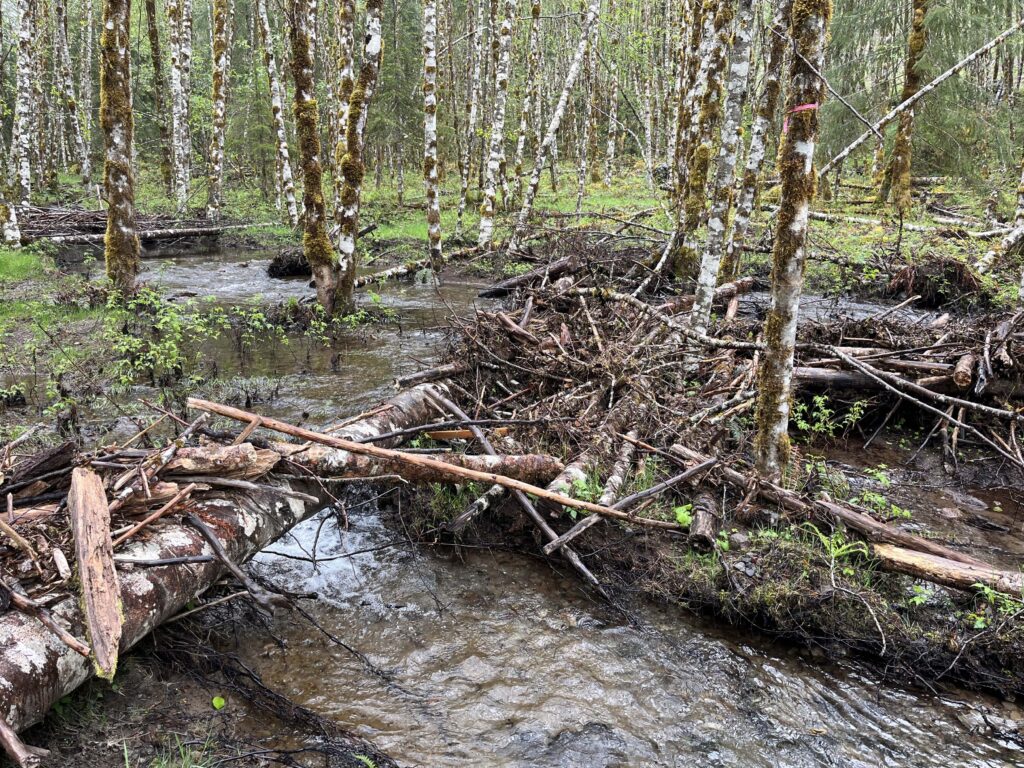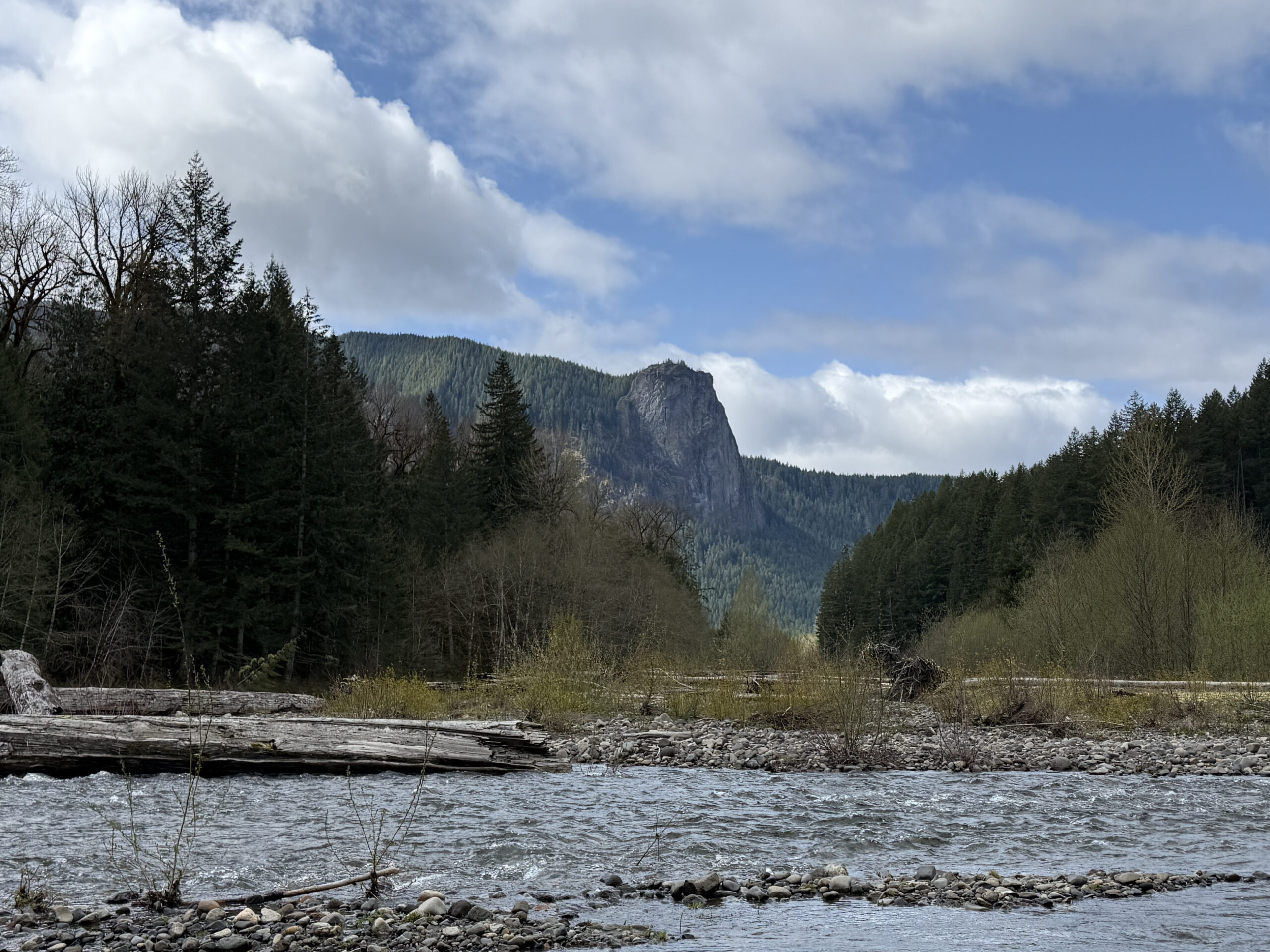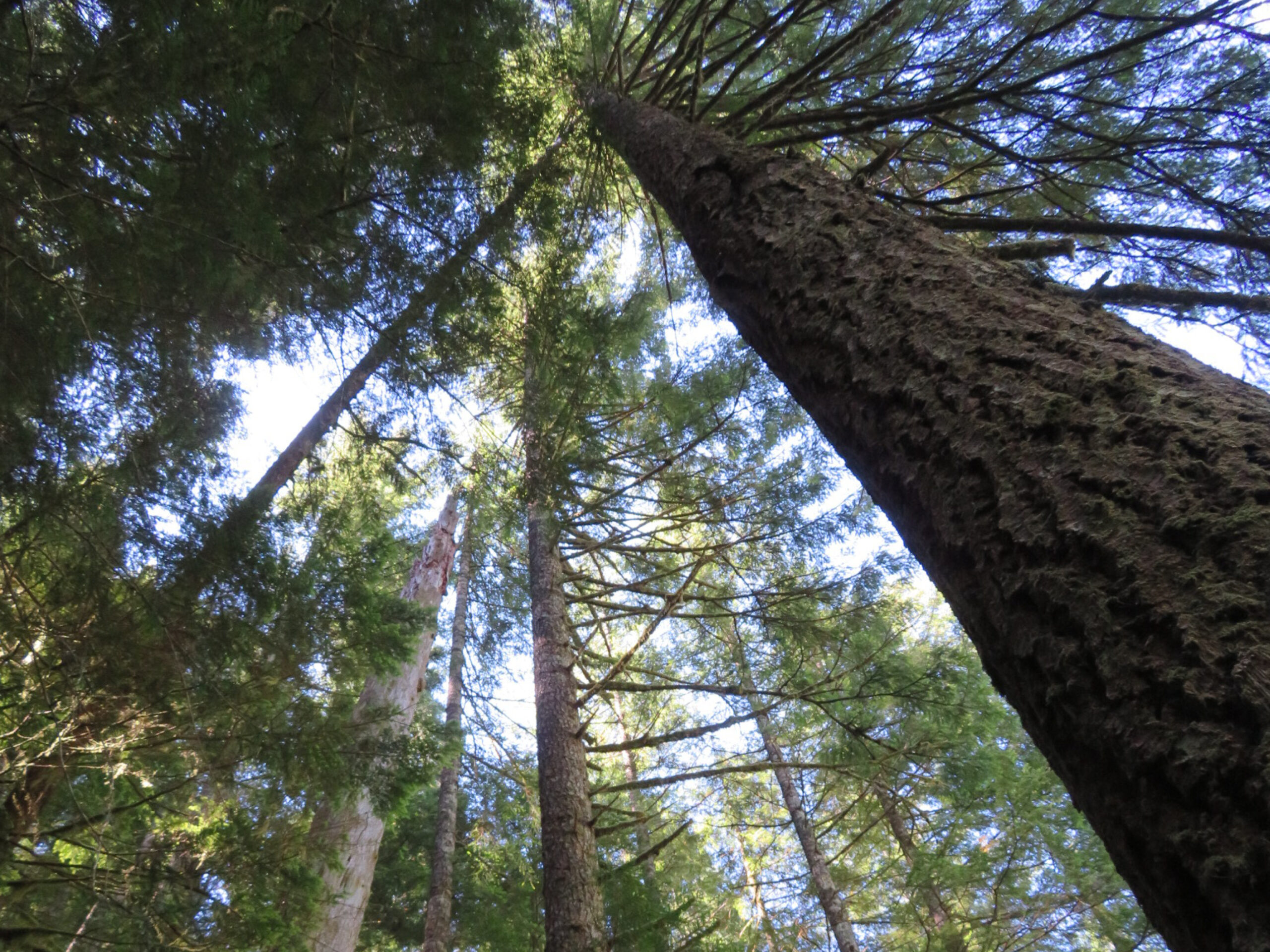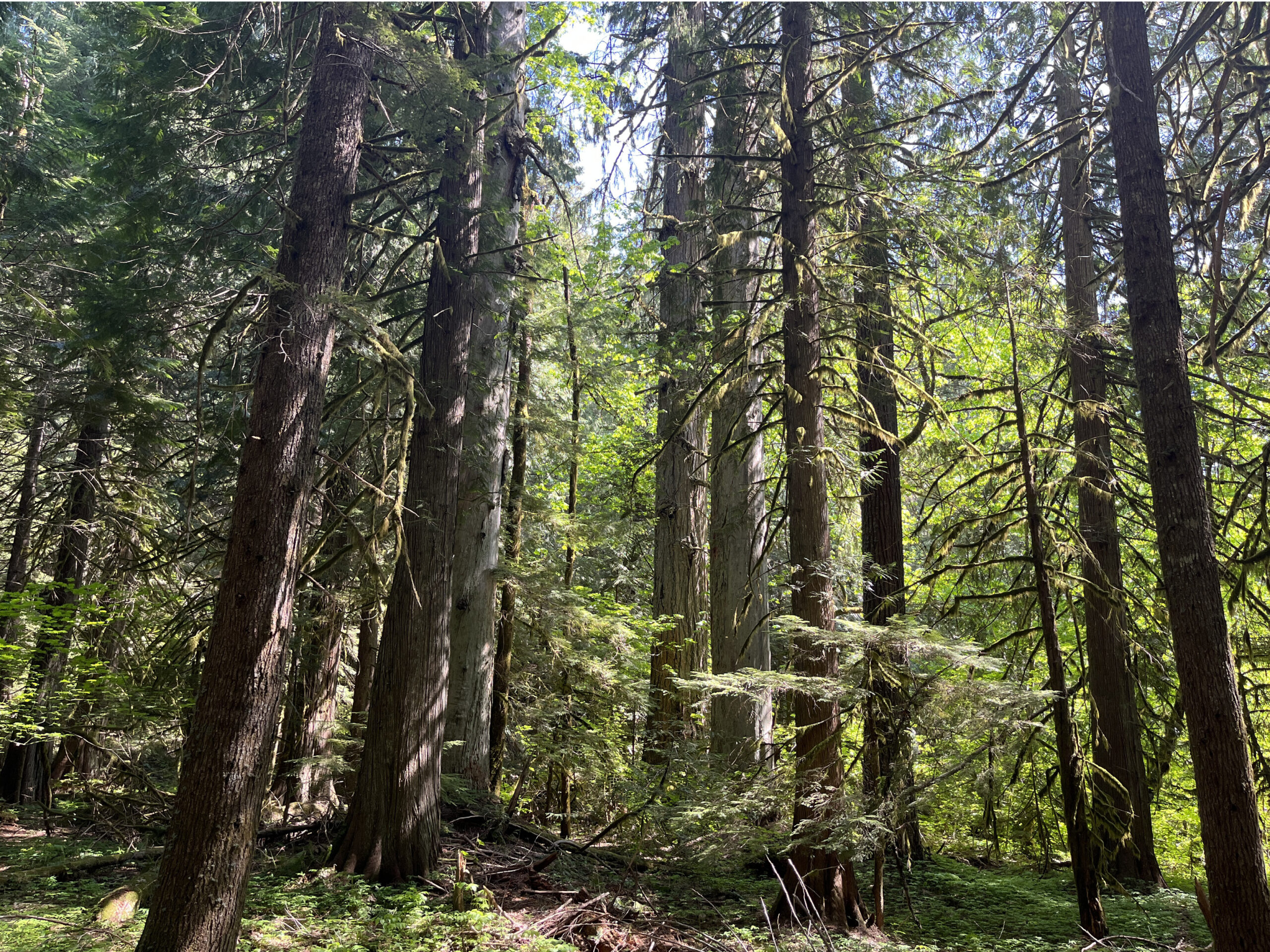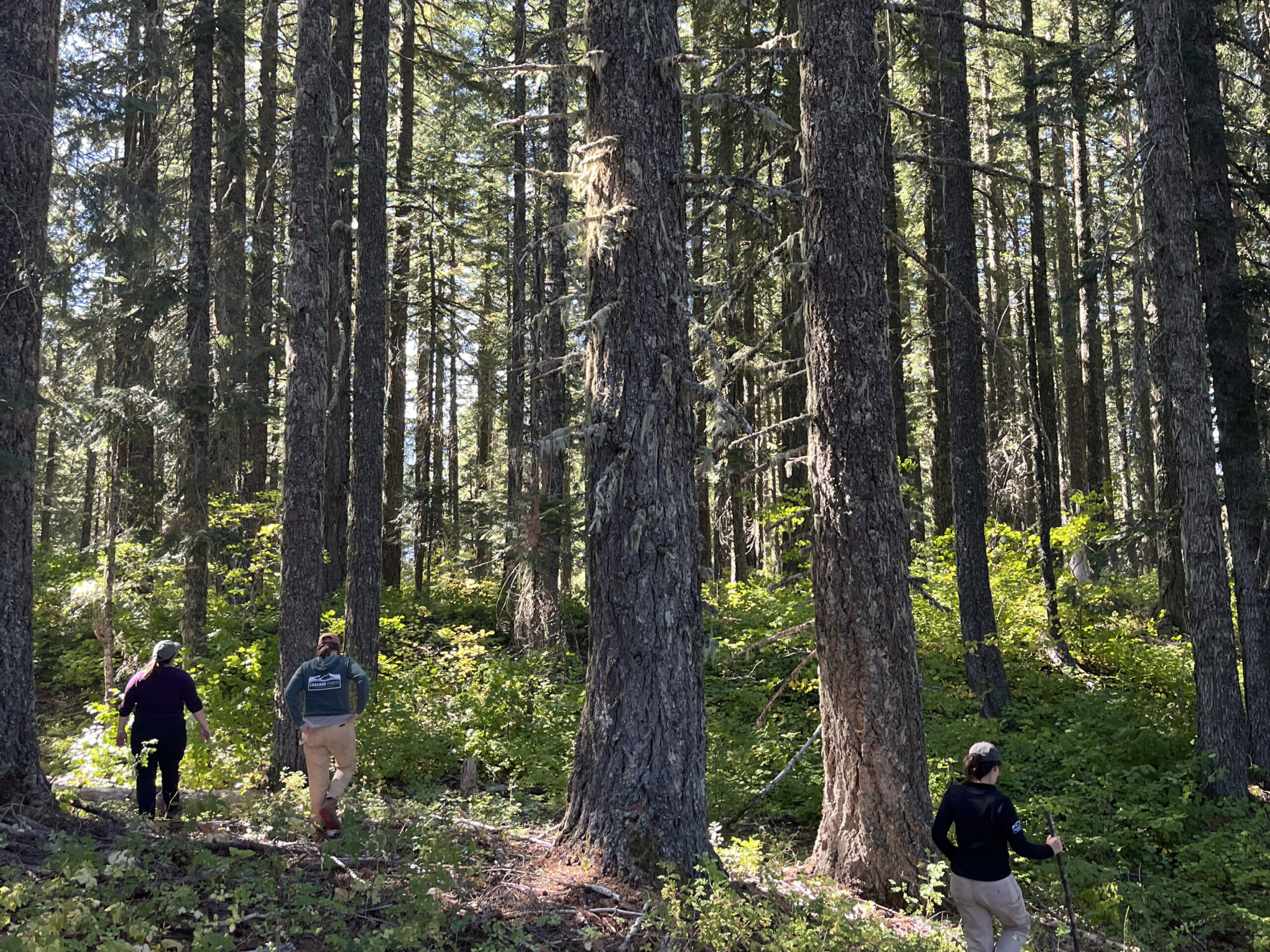In August 2022, with the help of eight dedicated volunteers, we built a series of instream structures along Stump Creek to improve habitat for coho, steelhead, and Pacific lamprey. In mid-May of this year, we visited the restoration area and were immensely excited by what we saw!
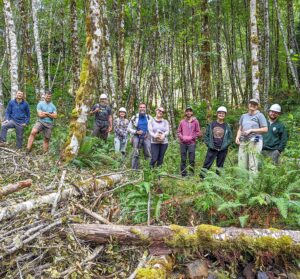
Stump Creek is a tributary of the South Fork Toutle River, which flows from the western slopes of Mount St. Helens down to the Cowlitz River then into the Columbia River and out to the ocean. As an undammed waterway, it is a relative rarity as far as large river systems in this region go. Heavy logging and the lahar flow from the 1980 eruption has etched a distinct stamp on the landscape of this watershed. Where giant conifers once lined these banks and provided habitat-diversifying instream wood, there are now rows of younger trees waiting their turn to fall in the stream. In addition to the severe impacts of streamside logging and the eruption, the waterways of the South Fork Toutle watershed were also impacted by road building and stream cleanout activities of years past.
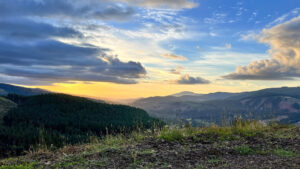
We are working with our partners at Lower Columbia Fish Enhancement Group, who are leading the charge with large wood placement throughout the South Fork Toutle River watershed, to rebuild habitat for anadromous fish and other wildlife. We are hoping that future generations of juvenile coho and steelhead will one day have a wide array of deep water pockets to call their home before they swim downstream to the ocean.
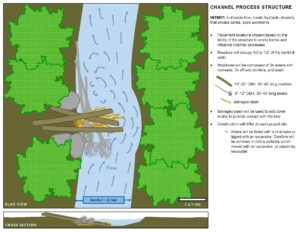
Our approach for this project employs a method called low-tech, process-based restoration (LTPBR). This can mean a number of things but can generally be understood as a method of instream restoration that doesn’t require heavy machinery or expensive engineered designs and is intended to initiate ecosystem processes that will continue to evolve naturally over time. The restoration consists of using wood and plant materials to create habitat pools, direct streamflow into new areas, and increase overall stream complexity and sinuosity. The continually-evolving processes result because water is moved into new areas of the adjacent floodplain. The instream wood and changing landscape creates deep pools. As more water is held back, the channel gets overfilled and spills out horizontally across the landscape and can form side-channels and wetland areas. Inundating the nearby riparian forest can help expedite the recruitment of new instream wood by causing the banks to become unstable and the trees eventually fall and become instream wood.
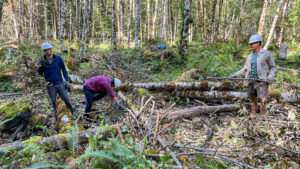
On our visit in May, we were pleased to see that our structures are creating fantastic new habitat for our species of interest – coho, steelhead, and Pacific lamprey. In the summer months, many reaches of Stump Creek can become dry and strand fish into tiny pools where they ultimately run out of dissolved oxygen and unfortunately die. Thanks to our work, there are numerous additional pools and new side channels! There is more sinuosity in the system, and other areas are holding a lot of water which will hopefully recharge the groundwater table and help pools stay longer into the summer. These pools will allow for safe refuge for the salmon and steelhead that utilize Stump Creek as juvenile rearing habitat.
Another positive change to the system was the retention of fine sediments behind some of the structures (several feet at some sites!). On previous lamprey habitat surveys, we concluded that there was a lack of habitat for the species. Our environmental DNA results from last year came back negative for the presence of Pacific lamprey, suggesting a similar finding. The buildup of fine sediments is necessary for Pacific lamprey’s long 3-7 year stay in sediment while in their larval stage. Instream structures can also help finer sediments separate from gravel, which is needed for lamprey (and salmon) spawning. We hope that this newly created habitat will attract Pacific lamprey to use Stump Creek when spawning and while in the larval stage. Pacific lamprey do not return to their natal stream, so there is a decent chance that they will find their way to Stump Creek!
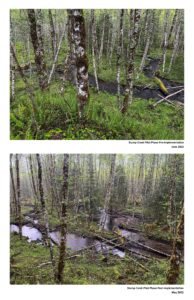
We were glad to see that our work has also created new beaver real estate for populations already living just downstream from the restoration site. We have good reasons to be hopeful that the habitat improvements now underway will attract beavers who will do even more for the area.
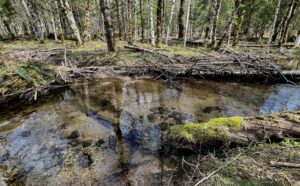
We will be working in the Stump Creek area and other parts of the South Fork Toutle watershed over the next few years, and we will continue to monitor and measure changes over time. We have multiple volunteer trips in August and September. If you want to join in on this exciting restoration project – sign up here!


